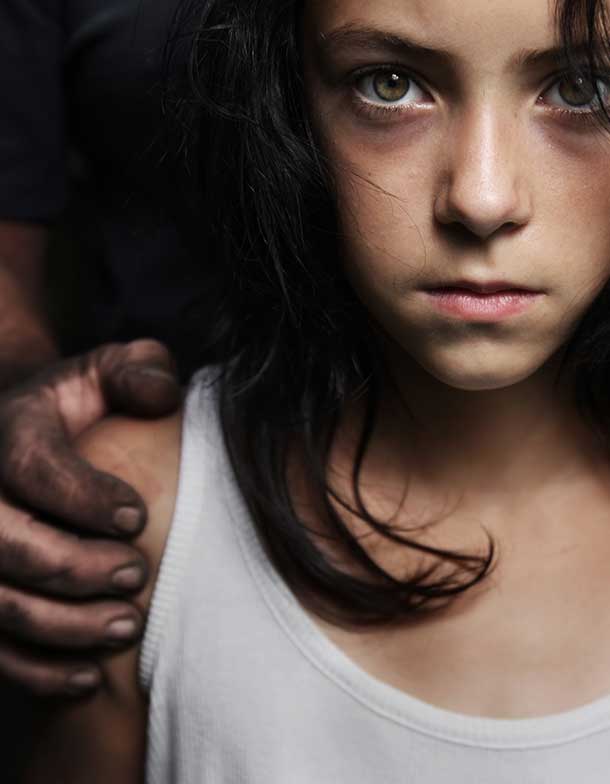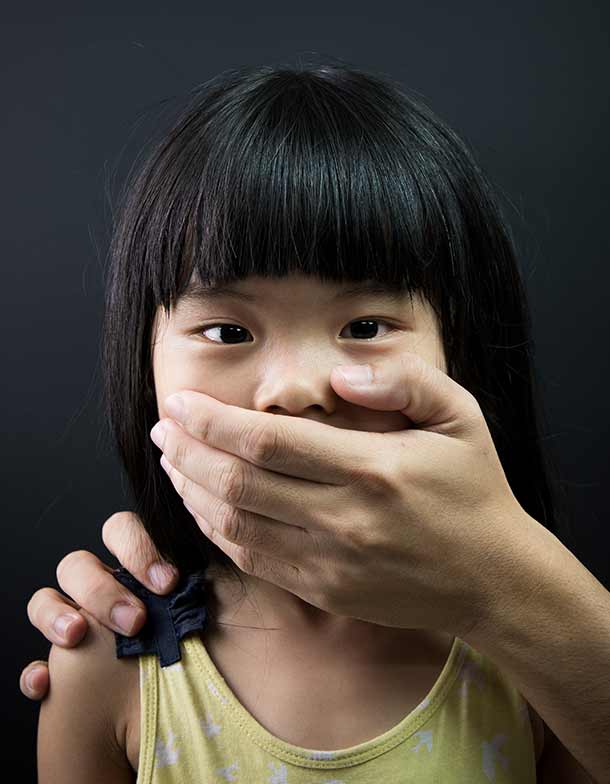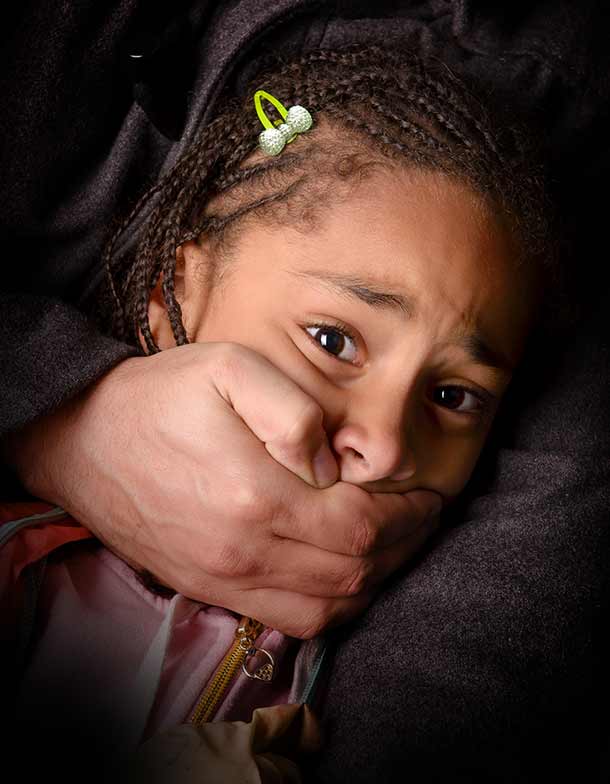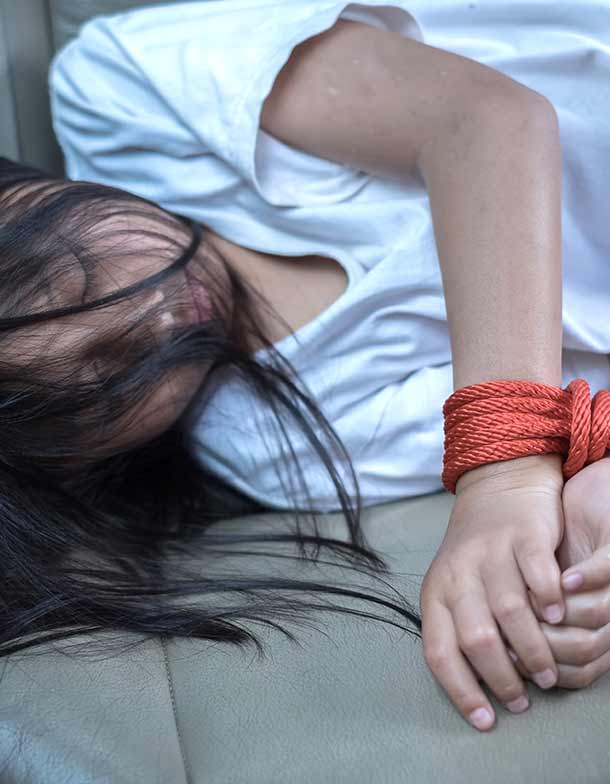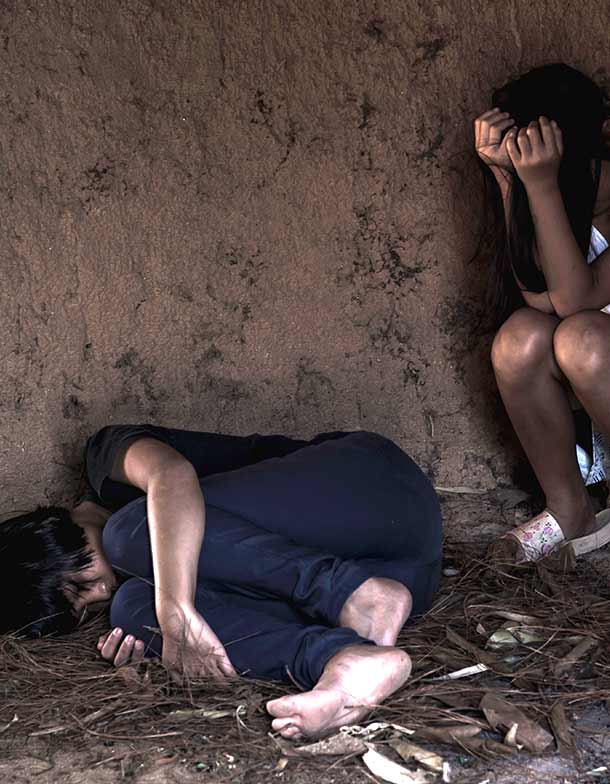Facts & Statistics
Facts matter. We are dealing with horrific and evil crimes that have grasped our planet. The details are so horrific they almost sound made up. On this page, you will find substantiated statements that have been researched and verified.
We will keep this page up-to-date so anyone doing research on Child Sex Trafficking and related crimes against children can count on the accuracy of this site and of this page.
-
30,000 people die each year while being trafficked for sex from neglect, abuse, disease, or torture.
Huffington Post, 2015.
-
75-80% of human trafficking and slavery is for sex.
Huffington Post, 2015.
-
The United States holds the title of the second highest destination in the world for trafficked girls who are as young as 5 or 6 years of age.
Huffington Post, 2015.
-
The average age of a trafficked child or exploited victim is between 9 and 13 years old, with some being as young as 5.
Huffington Post, 2016.
-
Traffickers target their victims on the Internet, on the telephone, through friends who have already been victimized, at the mall, and even in after-school programs where their families believe they are safe.
-
Most young victims are also victims of child neglect by their families.
Huffington Post, 2017.
-
According to the CIA, human trafficking is the third largest criminal industry in the world.
CIA.gov
-
Many believe that holding ‘buyers’ of commercial sex accountable will in turn reduce sex trafficking.
Forbes, 2018.
-
Human traffickers generate an estimated $150 billion a year from commercial sexual exploitation. That′s more than Nike, Microsoft, Google and Starbucks combined.
HumanRightsFirst.org
-
On average, a single sex slave can earn her pimp about $250,000 per year.
HuffingtonPost.com.
-
It takes as little as 5 seconds for a child to be kidnapped/stolen.
Huffington Post, 2015.
-
Enslaved children are sold to perform sex as many as FIVE times a day. Child exploitation is more lucrative than drug trafficking because a child can be exploited repeatedly as opposed to narcotics which exchange hands to the consumer only once.
-
Child victims of online sexual exploitation are younger and younger, and the images are more and more horrific.
WeAreThorn.org
-
The only way to stop child trafficking is to change the law and give much bigger punishment to not only the traffickers, but the customers as well.
Huffington Post, 2015.
-
Children are having their organs sold on the Black Market.
www.Express.Co.UK
-
18,000 Syrian children have had their organs harvested in the past 6 years.
AlternativeNewsNetwork.net
-
5% of all liver transplants come from these horrible crimes.
-
A child’s heart on the black market is worth up to $1,000,000.
-
Because crimes against children are becoming so lucrative, drug cartels are now turning to child exploitation, trafficking, slavery, organ harvesting, to get more profits.
-
Every year, child exploitation is increased by 36%.
-
The number of slaves in the world is greater than any other time in history.
Alternet.org
-
Sex traffickers tend to recruit children because they are not only more unsuspecting than adults, but there is also a high demand for young victims.
HuffingtonPost.com
-
From 2003 to 2015, according to the FBI Director at the time Robert Mueller, only 433 of the child victims have been rescued and only 308 traffickers and pimps have been prosecuted for their crimes.
HuffingtonPost.com 2015
-
Although Congress did pass the Trafficking Victims Prosecution Act (TVPA) in 2000, it was underfunded. It has since been re-authorized many times.
www.Justice.gov.
-
Each year, according to the Polaris Project, there are 100,000 to 300,000 children prostituted in America, and many more at risk.
Bartleby.com
-
73% of child-trafficking reports in the USA involve the internet.
USAToday.com
-
In an increasingly interconnected world, children are more at risk than ever of being sexually exploited or sold, a United Nations independent expert warned today, calling for decisive steps at the global level to stop crimes such as child prostitution and trafficking.
UNWomen-USNC.org
-
Demand fuels sex trafficking and the commercial sex industry. Holding “buyers” of commercial sex accountable reduces sex trafficking. Sweden, Norway, Iceland, France, Canada, Northern Ireland, and Ireland have effectively addressed the demand for commercial sex and sex trafficking by decriminalizing prostituted persons, and criminalizing those who purchase sex. As a result, street prostitution, and sex trafficking have decreased.
EqualityNow.org
-
Drug addicts have rehab as a solution, and can recover, but children who have experienced abuse, slavery, exploitation, and trafficking, have no solution, as they will forever be traumatized.
-
At least 40 million people worldwide are estimated to be trapped in modern slavery today—more than ever before—as poverty, conflict and crises fuel the growing global slave trade. From men made to work in factories, farms and fishing boats and women forced to sell sex to people exploited for their organs and children sent to beg or forced to marry, human trafficking is one of the fastest growing criminal enterprises.
TheWeek.in
-
NAMBLA organization (North American Man/Boy Love Association)
The Constitution was ratified in 1788. The purpose of the First Amendment was to defend the freedom of the American people, and to grant the freedom of expression. But, it was NEVER meant to be used to take another human’s freedom, to use it as an example to bully and attach someone, or to exploit other human beings for one’s own benefit. For example, the NAMBLA organization (North American Man/Boy Love Association) is an organization that advocates pedophilia OPENLY. Is this what the Constitution intended? Absolutely not. And NAMBLA is not the only organization of its kind. There are hundreds of organizations around the world that advocate pedophilia. Some of these organizations have been “laying low” to avoid further investigation, but they are very public, and anyone can become a member.
-
Human Trafficking Victims Sold into Slavery
Children in Ghana: $50
Children in India: $45
Children in Mali: $600 for child soldier
Children in Thailand: $25
Children in United Kingdom: $25,000
Girls in India: $24
Girls in Bangladesh: $250
Girls in Kenya: $600 for girls between the age of 10-15
Girls in Mozambique: $2
Person in Canada: $4,879 paid by pimp to trafficker
Teenage girls in Iraq: $5,000 for virgins $2,500 for Non-virgins
Teenage girls in Ontario: $5,989 for a girl from Quebec
Virgin child in Cambodia: $500-$800
Virgin girl in Medellin, Colombia: $2,600 in online auction
-
The only way to stop child trafficking is to enact changes to laws which provide stiffer penalties; not only to traffickers, but to the consumers as well.
-
More than 80,000 children are reported missing each year. That′s more than 2000 per day.
CNN – Anderson Cooper Blog
-
We are not finding victims in the USA because we are not looking for them.
U.S. Department of Adviser on Traffic
-
Children are being auctioned off on the internet.
-
The only way to stop child trafficking is to enact changes to the law which provide stiffer penalties not only the traffickers but to the consumers as well.
-
Almost three-quarters are female—and one in four a child—with modern-day slavery most prevalent in Africa followed by Asia and Pacific.
-
North Korea has the world′s highest rate of slavery, with about one in 10 people enslaved.
TheWeek.in
-
India is home to the largest number of slaves globally, with 8 million, followed by China (3.86 million), Pakistan (3.19 million), North Korea (2.64 million), Nigeria (1.39 million), Iran (1.29 million), Indonesia (1.22 million), Democratic Republic of the Congo (1 million), Russia (794,000) and the Philippines (784,000).
TheWeek.in
-
Human trafficking generates an estimated $150 billion each year in illicit profits for traffickers and slavemasters.
TheWeek.in
-
The United Nations has designated July 30 World Day against Trafficking in Persons, with the world striving to meet a UN goal to end forced labor and modern slavery by 2030.
TheWeek.in
-
The United Nations′ latest global goals, the Sustainable Development Goals, passed by UN member states in 2015, call for the eradication by 2030 of forced labour, modern slavery and human trafficking, and an end to child labour.
TheWeek.in



